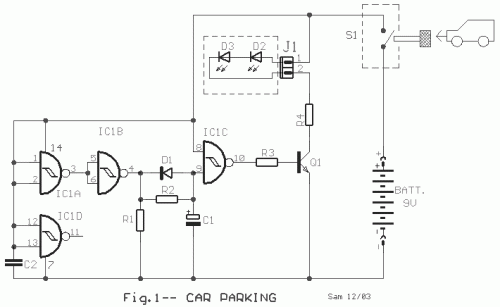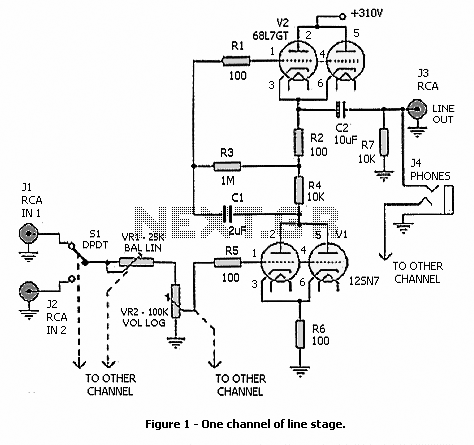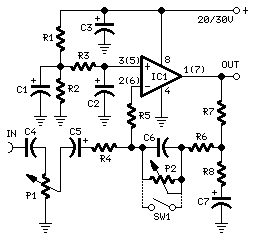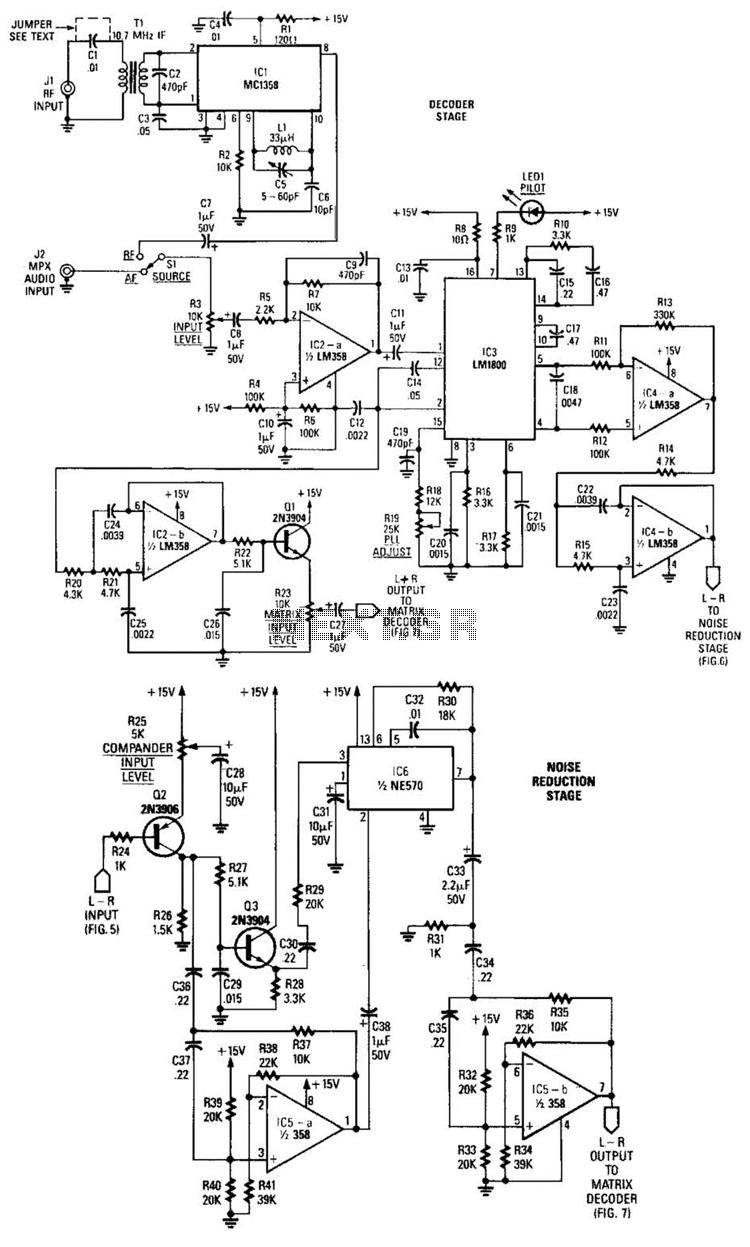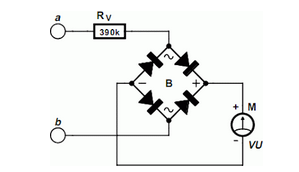
Stereo balance indicator
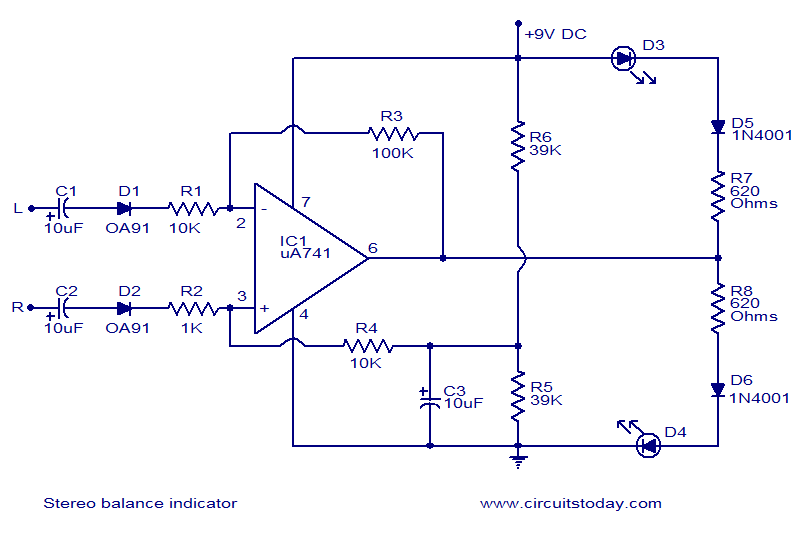
This is one of the simplest stereo balance indicator circuits available. The circuit provides a visual indication using two LEDs, which represent the difference in balance between the left and right channels of a stereo system. It is based on a uA741 operational amplifier (op-amp) IC. The IC compares the signals from both channels, and when the signals are balanced, the output remains steady, causing the LEDs to glow with equal brightness. Any imbalance in sound results in a proportional variation in the brightness of the two LEDs.
The stereo balance indicator circuit utilizes the uA741 op-amp to achieve its functionality. The op-amp is configured in a differential mode, where the non-inverting input is connected to the left audio channel and the inverting input is connected to the right audio channel. The output of the op-amp is then fed to a pair of LEDs, which are connected in such a way that their brightness is directly related to the voltage difference between the two input signals.
When the audio signals from the left and right channels are equal, the output voltage of the op-amp is stable, typically at a mid-level voltage, which results in both LEDs illuminating at the same brightness. In this state, the circuit indicates that the stereo channels are balanced. Conversely, when there is an imbalance, one channel will produce a higher voltage than the other, leading to a change in the output voltage of the op-amp. This change causes one LED to shine brighter than the other, providing a visual cue that the balance needs to be adjusted.
For optimal performance, the circuit may include a potentiometer that allows for manual adjustment of the balance, enabling users to fine-tune the output based on their preferences. Additionally, bypass capacitors may be included near the power supply pins of the op-amp to ensure stable operation and minimize noise. The overall design is compact and can be easily integrated into existing audio systems, making it a practical solution for enhancing audio balance visualization.This is one of the simplest stereo balance indicator circuit that you can have. The circuit will give a visual indication (using two LEDs) proportional to the difference in balance between the left and right channels of a stereo system. The circuit is based on a uA741 opamp IC. The IC compares the signals from the two channels and when both signal s are in balance, the output of the IC will be steady and the LEDs will glow in same brightness. Unbalance in sound causes the two LEDs to vary in brightness proportionally. 🔗 External reference
The stereo balance indicator circuit utilizes the uA741 op-amp to achieve its functionality. The op-amp is configured in a differential mode, where the non-inverting input is connected to the left audio channel and the inverting input is connected to the right audio channel. The output of the op-amp is then fed to a pair of LEDs, which are connected in such a way that their brightness is directly related to the voltage difference between the two input signals.
When the audio signals from the left and right channels are equal, the output voltage of the op-amp is stable, typically at a mid-level voltage, which results in both LEDs illuminating at the same brightness. In this state, the circuit indicates that the stereo channels are balanced. Conversely, when there is an imbalance, one channel will produce a higher voltage than the other, leading to a change in the output voltage of the op-amp. This change causes one LED to shine brighter than the other, providing a visual cue that the balance needs to be adjusted.
For optimal performance, the circuit may include a potentiometer that allows for manual adjustment of the balance, enabling users to fine-tune the output based on their preferences. Additionally, bypass capacitors may be included near the power supply pins of the op-amp to ensure stable operation and minimize noise. The overall design is compact and can be easily integrated into existing audio systems, making it a practical solution for enhancing audio balance visualization.This is one of the simplest stereo balance indicator circuit that you can have. The circuit will give a visual indication (using two LEDs) proportional to the difference in balance between the left and right channels of a stereo system. The circuit is based on a uA741 opamp IC. The IC compares the signals from the two channels and when both signal s are in balance, the output of the IC will be steady and the LEDs will glow in same brightness. Unbalance in sound causes the two LEDs to vary in brightness proportionally. 🔗 External reference
